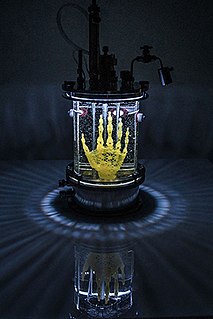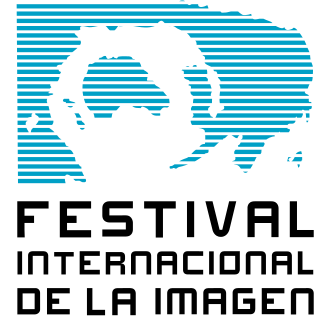Multimedia is content that uses a combination of different content forms such as text, audio, images, animations, video and interactive content. Multimedia contrasts with media that use only rudimentary computer displays such as text-only or traditional forms of printed or hand-produced material.

Digital art is an artistic work or practice that uses digital technology as part of the creative or presentation process. Since the 1970s, various names have been used to describe the process, including computer art and multimedia art. Digital art is itself placed under the larger umbrella term new media art.
Software art is a work of art where the creation of software, or concepts from software, play an important role; for example software applications which were created by artists and which were intended as artworks. As an artistic discipline software art has attained growing attention since the late 1990s. It is closely related to Internet art since it often relies on the Internet, most notably the World Wide Web, for dissemination and critical discussion of the works. Art festivals such as FILE Electronic Language International Festival, Transmediale (Berlin), Prix Ars Electronica (Linz) and readme have devoted considerable attention to the medium and through this have helped to bring software art to a wider audience of theorists and academics.

Electronic art is a form of art that makes use of electronic media. More broadly, it refers to technology and/or electronic media. It is related to information art, new media art, video art, digital art, interactive art, internet art, and electronic music. It is considered an outgrowth of conceptual art and systems art.

Digital poetry is a form of electronic literature, displaying a wide range of approaches to poetry, with a prominent and crucial use of computers. Digital poetry can be available in form of CD-ROM, DVD, as installations in art galleries, in certain cases also recorded as digital video or films, as digital holograms, on the World Wide Web or Internet, and as mobile phone apps.
Enterprise content management (ECM) extends the concept of content management by adding a time line for each content item and possibly enforcing processes for the creation, approval and distribution of them. Systems that implement ECM generally provide a secure repository for managed items, be they analog or digital, that indexes them. They also include one or more methods for importing content to bring new items under management and several presentation methods to make items available for use.
Digital usually refers to something using digits, particularly binary digits.
Electronic literature or digital literature is a genre of literature encompassing works created exclusively on and for digital devices, such as computers, tablets, and mobile phones. A work of electronic literature can be defined as "a construction whose literary aesthetics emerge from computation", "work that could only exist in the space for which it was developed/written/coded—the digital space". This means that these writings cannot be easily printed, or cannot be printed at all, because elements crucial to the text are unable to be carried over onto a printed version. The digital literature world continues to innovate print's conventions all the while challenging the boundaries between digitized literature and electronic literature. Some novels are exclusive to tablets and smartphones for the simple fact that they require a touchscreen. Digital literature tends to require a user to traverse through the literature through the digital setting, making the use of the medium part of the literary exchange. Espen J. Aarseth wrote in his book Cybertext: Perspectives on Ergodic Literature that "it is possible to explore, get lost, and discover secret paths in these texts, not metaphorically, but through the topological structures of the textual machinery".
Locative media or location-based media (LBM) are media of communication functionally bound to a location. The physical implementation of locative media, however, is not bound to the same location to which the content refers.

The Festival Internacional de Linguagem Eletrônica is a New media art festival that usually takes place in three different cities of Brazil: São Paulo, Rio de Janeiro and Porto Alegre and it has also participated in other events around the world. It is the biggest art & technology festival in Brazil, and it serves as a lead indicator of the plurality of the work created in the interactive art field not only nationally but also internationally.
Margot Lovejoy is a digital artist and historian of art and technology. She is Professor Emerita of Visual Arts at the State University of New York at Purchase. She is the author of Digital Currents: Art in the Electronic Age. Lovejoy is recipient of a 1987 Guggenheim Fellowship and a 1994 Arts International Grant in India.

Neural is a print magazine established in 1993 dealing with new media art, electronic music and hacktivism. It was founded by Alessandro Ludovico and Minus Habens Records label owner Ivan Iusco in Bari (Italy). In its first issue there was the only translation in Italian of the William Gibson's Agrippa book.
Blast Theory is a Portslade-based artists' group, whose work mixes interactive media, digital broadcasting and live performance.

Hybrid arts is a contemporary art movement in which artists work with frontier areas of science and emerging technologies. Artists work with fields such as biology, robotics, physical sciences, experimental interface technologies, artificial intelligence, and information visualization. They address the research in many ways such as undertaking new research agendas, visualizing results in new ways, or critiquing the social implications of the research. The worldwide community has developed new kinds of art festivals, information sources, organizations, and university programs to explore these new arts.
Hybrid arts is also the name of a non profit Arts education company in the United Kingdom. Set up in 2003 after a four-year development period to create a new species of training and arts engagement provider in the cultural industries...see Hybrid:arts

The International Image Festival is a space for meeting and discussion on topics related to visual design, electronic arts, digital audiovisual creation, digital sound, and electro-acoustic, and in general, new relationships between art, design, and science and technology. Proposing an open forum for discussion in areas of digital creation, integrating art, science and technology through different activities and projects, such as: art and science conferences, seminars and workshops, calls for national and international events including new music concerts, analysis sessions, exhibitions, publications and webcast initiatives.

New media art refers to artworks created with new media technologies, including digital art, computer graphics, computer animation, virtual art, Internet art, interactive art, video games, computer robotics, 3D printing, cyborg art and art as biotechnology. The term differentiates itself by its resulting cultural objects and social events, which can be seen in opposition to those deriving from old visual arts. This concern with medium is a key feature of much contemporary art and indeed many art schools and major universities now offer majors in "New Genres" or "New Media" and a growing number of graduate programs have emerged internationally. New media art often involves interaction between artist and observer or between observers and the artwork, which responds to them. Yet, as several theorists and curators have noted, such forms of interaction, social exchange, participation, and transformation do not distinguish new media art but rather serve as a common ground that has parallels in other strands of contemporary art practice. Such insights emphasize the forms of cultural practice that arise concurrently with emerging technological platforms, and question the focus on technological media, per se.

Ars Electronica Linz GmbH is an Austrian cultural, educational and scientific institute active in the field of new media art, founded in Linz in 1979. It is based at the Ars Electronica Center, which houses the Museum of the Future, in the city of Linz. Ars Electronica’s activities focus on the interlinkages between art, technology and society. It runs an annual festival, and manages a multidisciplinary media arts R&D facility known as the Futurelab. It also confers the Prix Ars Electronica awards.
The conservation and restoration of time-based media art is the study and practice of conserving time-based media and its components. The conservation and restoration of time-based media art is a complex undertaking within the field of conservation that includes understanding both physical and digital conservation methods; there are many facets of time-based media conservation. Its major aim is to detect and monitor short and long-term changes that an artwork may undergo in response to its environment, technological developments, exhibition-design, or technicians' preferences.









